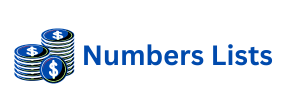Elevating Content Writing Through Semantic SEO Principles
Modern content writing extends far beyond simple keyword stuffing. Today, the focus is squarely on Semantic SEO. This approach ensures your content deeply understands user intent. It covers topics comprehensively. Search engines like Google aim to provide the best answers. They seek content that truly matches the meaning behind queries. This means your articles must address entities and related concepts. They need to offer complete solutions. Moving past individual keywords is crucial. Think about topic clusters and overall relevance. This holistic view enhances your content’s authority. It significantly improves its organic search performance. Quality content is the foundation here.
Understanding Semantic SEO means creating content that search engines can easily interpret. It is about context, not just words. When you write, consider the broader topic. What questions might a user have? What related subtopics are important? Comprehensive articles rank better. They provide more value to readers. This strategy builds trust with your audience. It also signals expertise to search algorithms. Embrace this shift for stronger online visibility. It transforms mere articles into valuable resources. This is essential for long-term success. Focus on the user’s full journey.
The Power of External Backlink Building for Authority
Building high-quality External Backlink is a cornerstone of effective SEO. These links act as powerful votes of confidence. When reputable websites link to your content, it signals trust. Search engines view these links as endorsements. They indicate that your content is valuable and authoritative. Acquiring these links is not about quantity. It is about the quality and relevance of the linking domain. A strong external backlink profile enhances your domain authority. This directly impacts your search engine rankings. It is a critical component for any content writing strategy. Focus on creating link-worthy assets. This naturally attracts external references. Build relationships within your industry. This helps with outreach efforts. Think of them as digital reputation builders.
High-quality external backlinks validate your content’s expertise. They tell search engines you are an authority. This is vital for Semantic SEO. It confirms that your topic coverage is credible. Aim for links from sites with high domain ratings. Relevance is also key. A link from a related industry site is more valuable. It tells search engines your content fits a specific niche. This boosts your content’s topical relevance. It helps it rank for complex queries. Strategic backlink acquisition is a long-term play. It requires consistent effort and excellent content. This strategy yields significant SEO benefits over time. Prioritize content that people naturally want to share. This creates the best opportunities.
Optimizing User Experience with Internal Backlink Strategies
While external links bring authority, internal links structure your site. They guide users and search engines. A well-planned Internal Backlink strategy improves navigation. It enhances the user experience significantly. Users can easily find related content. This keeps them on your site longer. It reduces bounce rates. For search engines, internal links are crucial. They help bots discover all your pages. They also distribute “link equity” across your site. This means important pages receive more power. It helps less authoritative pages rank better. Create logical pathways through your content. This strengthens your site’s overall SEO. Think of your website as a connected network.
Effective internal linking highlights the relationships between your content pieces. It reinforces your site’s topical authority. By linking relevant articles, you show topic expertise. This helps search engines understand your site’s structure. It clarifies which pages are most important. Use descriptive anchor text for internal links. This provides context for both users and search engines. Avoid generic phrases like “click here.” Instead, use keywords that describe the linked page. This practice aids in Semantic SEO. It strengthens the relevance of your linked content. A strong internal linking structure is non-negotiable. It supports better crawlability and indexation. This ultimately leads to improved search visibility. Make every link meaningful.
Integrating Keyword Research with Semantic Understanding
True Semantic SEO goes beyond traditional keyword research. It integrates an understanding of user intent. It focuses on the entities involved in a search query. Instead of just targeting a single keyword, consider the entire topic. What related terms and phrases do users search for? What underlying questions do they have? This approach allows for comprehensive content creation. Your content will answer multiple facets of a user’s query. This makes it more valuable and authoritative. Tools can help identify semantically related keywords. They reveal common questions and topics. Incorporate synonyms and latent semantic indexing (LSI) keywords. This enriches your content naturally. It reflects how people genuinely speak and search. This depth signals strong relevance to search engines. It elevates your content’s ability to rank for diverse queries.
Semantic keyword research involves looking at the bigger picture. It’s about covering a topic exhaustively. Think about the entire search journey. From initial broad searches to very specific questions. Your content should cater to all stages. This comprehensive approach builds topical authority. It positions you as an expert resource. Search engines favor content that offers complete answers. They want to satisfy user intent fully. This often means including various subtopics. It means addressing potential follow-up questions. By doing so, you create highly relevant content. This significantly boosts your search performance. It drives more organic traffic. Always aim to provide the most thorough information available.
Crafting Compelling Content for Modern Search Engines
Crafting compelling content in today’s digital landscape demands a multi-faceted approach. It combines quality writing with strategic SEO principles. Focus on delivering genuine value to your audience. Incorporate robust Semantic SEO practices. This includes understanding user intent and entity recognition. Develop a thoughtful external and internal backlink strategy. These elements are not separate; they are deeply intertwined. A holistic content strategy is essential. It ensures sustained online visibility. Future-proof your content for evolving search algorithms. Always prioritize the user experience. Well-structured, informative, and engaging content wins. It builds trust and authority. This leads to lasting search engine success. Consistently provide exceptional value. This is the ultimate goal.
